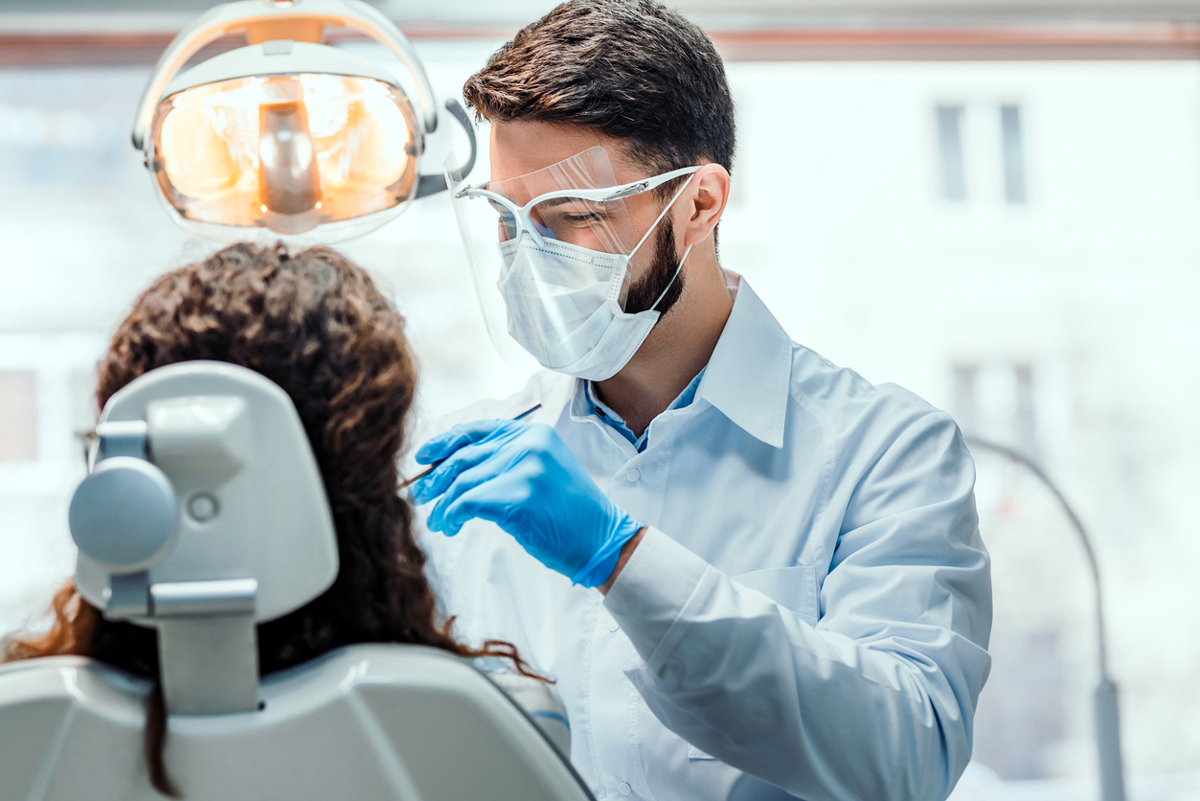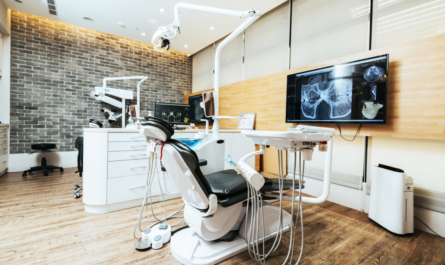The better the fit, the more likely it will be worn.
By Laura Thill
There’s no skirting the importance of facemasks both during – and between – patient visits. Dental professionals face constant exposure to microorganisms from dental unit waterlines and bioaerosols, which are generated by dynamic dental instruments. Splash, splatter and submicron aerosols continue to be a source of potential infection. And, because submicron particles are known to stay airborne for up to 30 minutes following an ultrasonic scaling procedure, the risk does not end once the procedure is over or the patient leaves the treatment room.
“Based on a 2004 classic literature review of aerosols and splatter by Harrel and Molinari, ultrasonic scaling has been shown to produce the greatest amount of aerosol and splatter contamination due to the composition of particles of varying size, which range from 0.001 to 100 µ,” says Leann Keefer, RDH, MSM, director, clinical services & education, Crosstex International, now a proud member of HuFriedy Group. “The smaller the size, the greater the potential it will be inhaled and penetrate and lodge in the lungs, which is thought to carry the greatest potential for transmitting infections. Additionally, because these submicron particles stay airborne for extended periods, dental clinicians and team members must opt to don/wear, at a minimum, a Level 1 mask between patients when they are turning/cleaning the treatment room.”
A mask for every task
Facemasks have seen improvements in recent years with regard to fit and efficiency. And while some masks may look similar, each brand or design offers unique characteristics, which affect its level of protection, notes Keefer. Selecting the right masks for a dental practice depends on the types of procedures for which they’ll be used. For instance, an ASTM Level 3 mask is recommended for procedures such as ultrasonic scaling or air-polishing, which produce moderate-to-heavy amounts of fluid, spray and/or aerosols, according to Keefer. (See the table: ASTM levels)
“Manufacturers who use quality sourced materials often choose to submit their products for voluntary ASTM testing,” says Keefer. “ASTM International is a standards organization, as well as a globally recognized leader in the development, product testing and delivery of international voluntary consensus standards. An ASTM specification determines the classification of medical face mask material performance, based on its fluid resistance, bacterial filtration efficiency, differential pressure (breathability), sub-micron particulate filtration efficiency and flammability. Clinicians use the ASTM F-2100-11 performance standard chart to select the correct level of mask for the task based on the amount and type of bioaerosols generated, as well as the length and time of the procedure.” When clinicians understand ASTM levels, they can make informed choices that ensure maximum protection and help minimize the spread of potentially infection bioaerosols, she adds.
“Additionally, it is important to understand that each layer of the mask has a specific function,” says Keefer. The outer layer facing the patient is designed to resist fluid, while the inner layer is designed to offer comfortable contact with the clinician’s face, she explains. The middle layer is designed to address the level of filtration. “The thickness or weight of the middle layer impacts the filtration efficiency; typically, this layer weighs anywhere from 18 to 33 grams per square meter (gsm).” However, clinicians do not always get what they pay for, she notes. “Some clinicians have cut their masks in half, only to discover they are constructed with only two layers, and the masks will not be as effective as expected.”
Fit, fogging and allergies
The more comfortable the mask is, the more likely people will wear it, notes Keefer. “Is the mask material soft against the skin? Are the ear loops attached to the outer portion of the mask? Is there a breathing pocket? If so, there is a higher chance that the mask will be worn properly,” she says. Some wearers may twist the ear loops into a figure eight for a closer, more comfortable fit, she adds. However, by doing so, the inner lining of the mask material inevitably will touch the lips and nose, leading to contact moisture and wicking from breathing and talking, which may result in cross-contamination and/or the risk of disease transmission.
“Some clinicians may have very sensitive skin and the repeated exposure to daily mask wear can result in contact dermatitis, a red, itchy rash caused by direct contact with a substance or an allergic reaction to it,” she points out. “Often, this will occur in reaction to the type of paper/tissue liner of the mask or any chemicals or dyes used during manufacturing.” In this case, it’s wise to opt for a hypoallergenic mask with a soft white hypoallergenic inner cellulose layer, which is free of chemicals, inks and dyes, she explains.
“Appropriate donning of the mask influences the fit and effectiveness,” says Keefer. “Since the highest area of bioaerosols contamination on the clinician’s face is between the eyes and the bridge of the nose, adaptation of the malleable nose strip is critical; this will also help reduce fogging of eyewear and loupes.
“Prior to placing the mask to the face, the wearer should create a slight concave divot by gently pressing their thumb against their first two fingers along the aluminum noseband,” she continues. “This will act as a guide for proper placement high on the bridge of the nose and secure a loop around each ear. The wearer should mold the nosepiece with the index and middle fingers for a secure fit around the nose and along the orbits of the eyes, and always ensure the pleats of the mask material are facing downward to prevent pooling of condensate or aerosols within the mask, which could result in wicking and contamination exposure. Some manufacturers offer a fog-free design feature, which includes an additional absorbent strip of breathable fabric on the inner layer attached along the top to trap condensation from clinician’s breath.”
In spite of the health risks associated with not wearing a facemask or selecting one with the appropriate fit characteristics, some dental professionals remain noncompliant, notes Keefer. “Knowing the standards, sharing the clinical why with colleagues and selecting the right mask for the task will ensure best practices in personal protective equipment.”
| ASTM* Levels | ||
| ASTM Level 1 | ASTM Level 2 | ASTM Level 3 |
| Ideal for procedures where low amounts of fluid, spray and/ or aerosols are produced. • Patient exams • Operatory cleaning and maintenance • Impressions • Lab trimming, finishing, and polishing • Orthodontics | Ideal for procedures where light-to-moderate amounts of fluid, spray and/or aerosols are produced. • Limited oral surgery • Endodontics • Prophylaxis • Restorative/composites • Sealants |
Ideal for procedures where moderate-to-heavy
amounts of fluid, spray, and/or aerosols are produced.
• Complex oral surgery
• Crown preparation
• Implant placement
• Periodontal surgery
• Use of ultrasonic scalers (magnetostrictive and piezo) • Laser-based applications |
| *ASTM Intemational is an international standards organization, as well as a globally recognized leader in the development, product testing, and delivery of international voluntary consensus standards. The latest version of the standard specifying performance of face masks, ASTM F2100- 11, was released in April 2011. Face mask material performances is based on testing for fluid resistance, bacterial filtration efficiency (BFE), particulate filtration efficiency (PFE), breathability, and flammability. |




